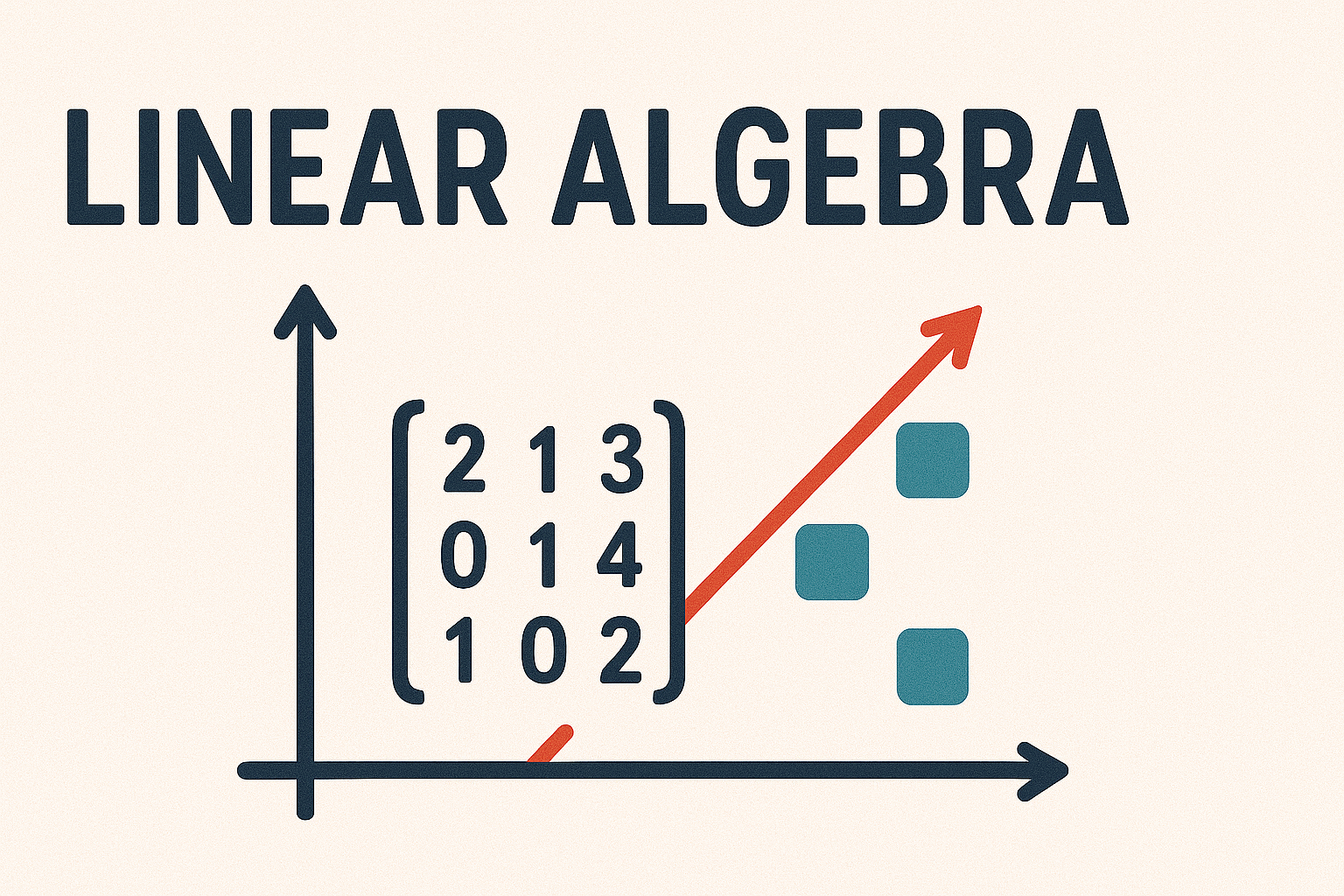4.3. Planes#
A plane is a flat two-dimensional surface. The vector equation for a plane in \(\mathbb{R}^n\) is very similar to that of a line. We just need two direction vectors instead of just the one we needed for a line.
Definition 4.6 (Vector equation of a plane)
Let \(\mathbf{p}\) be a point in \(\mathbb{R}^n\) and \(\mathbf{d}_1\) and \(\mathbf{d}_2\) are two non-zero vectors in \(\mathbb{R}^n\) which are not parallel. The plane which passes through \(\mathbf{p}\) in the directions of \(\mathbf{d}_1\) and \(\mathbf{d}_2\) has the equation
where \(\mathbf{r}\) is a general point on the plane and \(t_1,t_2 \in \mathbb{R}\) are parameters (Fig. 4.7).
Fig. 4.7 The position of a point \(\mathbf{r}\) on a plane can be obtained by adding scalar multiples of the direction vectors \(\mathbf{d}_1\) and \(\mathbf{d}_2\) to \(\mathbf{p}\).#
In other words, every point on a plane is obtained by adding some scalar multiples of any two vectors on the plane, \(\mathbf{d}_1\) and \(\mathbf{d}_2\), to the position vector of a point on the plane \(\mathbf{p}\). So the plane which passes through \(\mathbf{p}\) in the directions of \(\mathbf{d}_1\) and \(\mathbf{d}_2\). Note we need \(\mathbf{d}_1\) and \(\mathbf{d}_2\) not to be parallel else we would have only described a line again.
Definition 4.7 (The normal vector)
The normal vector to a plane is a vector that is perpendicular to that plane. If \(\mathbf{a}\) and \(\mathbf{b}\) are two vectors that lie on a plane then the normal vector is calculated using \(\mathbf{n} = \mathbf{a} \times \mathbf{b}\).
Fig. 4.8 The normal vector \(\mathbf{n}\) is perpendicular to the plane that the vectors \(\mathbf{a}\) and \(\mathbf{b}\) lie on.#
Recall that the dot product between two perpendicular vectors is zero. So if a plane is defined by the normal vector \(\mathbf{n} = (n_x, n_y, n_z)\) and a point with position vector \(\mathbf{p}=(p_x, p_y, p_z)\) which lies on the plane and if \((x,y,z)\) is the position vector of another point the plane then
This is known as the point-normal form of a plane.
Definition 4.8 (Point-normal form of a plane)
The point-normal form of the plane in \(\mathbb{R}^3\) which passes through the point with position vector \(\mathbf{p}\) with normal vector \(\mathbf{n}\) is
where \(\mathbf{r}\) is the position vector of an arbitrary point on the plane.
Fig. 4.9 A plane can be defined by a point on the plane and the normal vector to the plane.#
Example 4.6
A plane in \(\mathbb{R}^3\) passes through the three points with position vectors \(\mathbf{p}_1 = (2, 3, 1)\), \(\mathbf{p}_2 = (1, 0, -1)\) and \(\mathbf{p}_3 = (2, 1, 3)\).
(i) Find the point-normal form of the plane
(ii) Do the points with position vectors \(\mathbf{p}_4 = (1, 2, 1)\) and \(\mathbf{p}_5 = (2, 4, 0)\) lie on the plane?
Solution
(i) First we need to calculate the normal vector to the plane. We can do this by calculating the cross product of any two vectors that line on the plane, since we know \(\mathbf{p}_1\), \(\mathbf{p}_2\) and \(\mathbf{p}_3\) lie on the plane then so must the vectors \(\mathbf{p}_2 - \mathbf{p}_1\) and \(\mathbf{p}_3 - \mathbf{p}_2\) (or any other combination of these points)
Using equation (4.2) with \(\mathbf{p} = \mathbf{p}_1\)
If we had chosen \(\mathbf{p} = \mathbf{p}_2\) instead
This is the same as the answer as before. The same applies for any other point on the plane.
(ii) Checking \(\mathbf{p}_4\)
so \(\mathbf{p}_4\) does not lie on the plane.
Checking \(\mathbf{p}_5\)
so \(\mathbf{p}_5\) does lie on the plane.
4.3.1. Intersection of planes in \(\mathbb{R}^3\)#
We distinguish between various arrangements of planes, which are defined in terms of their normal vectors. We saw that a plane is perpendicular to its normal vector \(\mathbf{n}\). Now, any other plane that for which \(\mathbf{n}\) lies on will be described as a plane perpendicular to the plane. This is equivalent to the two normal vectors being perpendicular. Similarly, if two distinct planes have the same normal vector then they are parallel.
Often we would like to know when and how two or more objects in \(\mathbb{R}^n\) meet. Similar to the lines in \(\mathbb{R}^2\) we present a finite list of arrangements for three planes meeting in \(\mathbb{R}^3\).
3 planes intersect at a single point: a unique solution
3 planes intersect on a single line: infinite solutions
2 planes coincide and intersect a third: infinite solutions
2 parallel planes intersect another: no solutions
Each plane intersects with 2 others: no solutions
3 parallel planes: no solutions
2 coincident planes parallel to another: no solutions
All 3 planes coincide: infinite solutions
It is possible to classify such arrangements for higher dimensions - but it makes more sense to do it purely algebraically. That is precisely what linear algebra is useful for.
Example 4.7
Two non-parallel planes in \(\mathbb{R}^3\) are defined by the point-normal forms \(3x - 4y + z - 5 = 0\) and \(x + y - z - 2 = 0\) respectively. Find the intersection of these two planes
Solution
The normal vectors for these planes is given by the coefficients of \(x\), \(y\) and \(z\), therefore \(\mathbf{n}_1 = (3, -4, 1)\) and \(\mathbf{n}_2 = (1, 1, -1)\). The direction vector of the line of intersection must be parallel to both \(\mathbf{n}_1\) and \(\mathbf{n}_2\) (the intersecting line must lie in both planes), therefore we need to construct a vector perpendicular to both of these. A vector perpendicular to \(\mathbf{n}_1\) and \(\mathbf{n}_2\) can be found using \(\mathbf{n}_1 \times \mathbf{n}_2\)
In addition to the direction vector we need a point on the intersection line which must lie on both planes so we need to find a solution that satisfies
Adding these two equations gives
Let \(x = 1\) then \(y = -1\) and \(z = -2\) so the line of intersection between the two planes is
